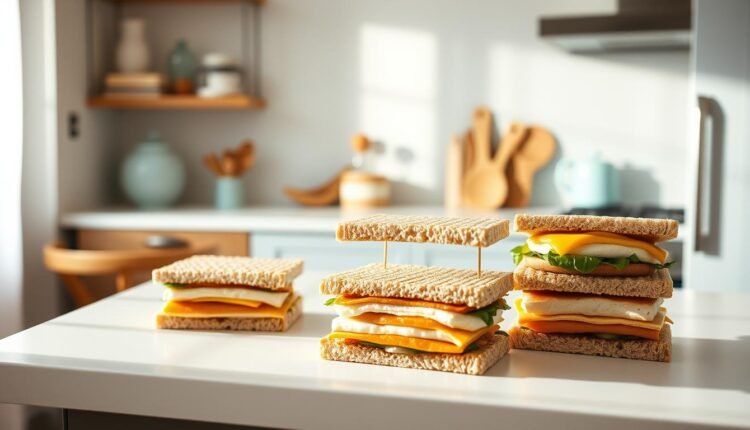Freezer Breakfast Sandwiches Nutrition Breakdown For Health Tracking
Uncover the nutritional details of your favorite freezer breakfast sandwiches. Our breakdown helps you make informed choices for a healthier meal prep.
Did you know your grab-and-go morning meal could pack nearly half your daily carb intake in one sitting? Take a classic ham, egg, and cheese option—it delivers 210 calories with a balance of protein, fats, and carbs. As someone who’s juggled daycare drop-offs and client meetings, I’ve learned that understanding these numbers transforms rushed mornings into nourishing routines.
This guide decodes what’s behind the wrapper of your favorite heat-and-eat options. We’ll explore how protein percentages stack against your daily needs, why calcium content matters for energy levels, and practical ways to align these meals with your health goals. Whether you’re managing dietary restrictions or simply want smarter fuel for back-to-back Zoom calls, knowledge is your best meal prep tool.
- Macronutrient ratios explained in real-life terms
- How to balance convenience with nutritional awareness
- Actionable tracking strategies for various diets
Overview of Freezer Breakfast Sandwiches
Mornings can feel like a race against the clock, but what if your kitchen offered a shortcut? Imagine unwrapping a warm, protein-packed meal without dirtying a single pan. That’s the magic of pre-prepped morning staples designed for real-life chaos.
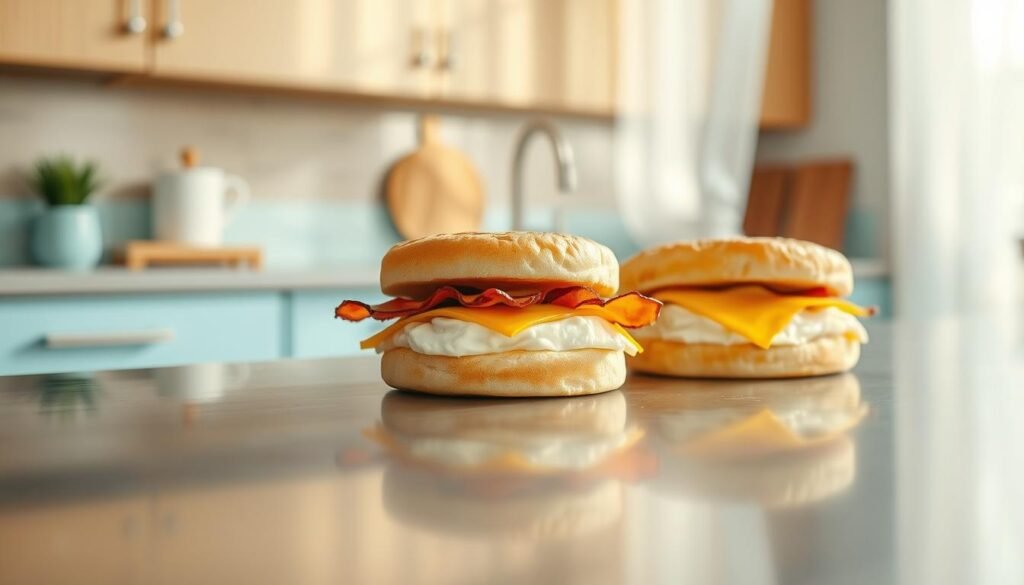
What Are Freezer Breakfast Sandwiches?
These handheld meals combine classic ingredients like fluffy eggs, melted cheese, and savory ham or sausage between toasted bread or English muffins. Pre-assembled and frozen, they’re your secret weapon for hectic days. I’ve burned enough toast during rushed mornings to appreciate their no-fuss reheating—just 90 seconds in the microwave revives them perfectly.
English muffins hold up better than sliced bread during freezing and reheating, making them a preferred base.
Health Benefits and Meal Prep Advantages
Beyond convenience, these meals deliver balanced fuel. A typical option provides 15-20 grams of protein to keep you full, plus calcium and B vitamins for sustained energy. Batch cooking lets you control ingredients, whether swapping turkey bacon for pork or adding spinach for extra nutrients.
Meal prep isn’t about perfection—it’s about practicality. Spending one Sunday afternoon preparing a dozen sandwiches saves hours weekly. As I tell my meal prep system students, “Consistency beats complexity every time.” Store them wrapped in parchment paper inside airtight containers to prevent freezer burn, and you’ve got breakfast handled for weeks.
freezer breakfast sandwiches nutrition breakdown: In-Depth Analysis
Let’s crack open the nutrition label together. Whether you’re fueling up for school drop-offs or prepping for back-to-back meetings, knowing your meal’s building blocks helps you stay in control. I’ve burned enough English muffins to appreciate how numbers tell the real story behind convenience foods.
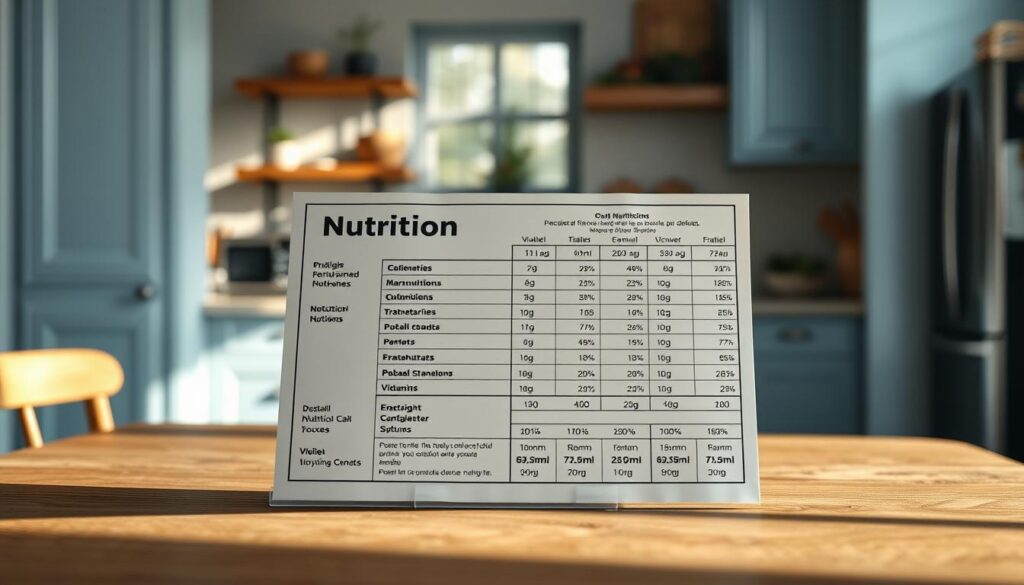
Macros That Move Your Day Forward
Take two popular options: A ham-and-egg version delivers 210 calories with 25g net carbs—like eating two slices of bread. But swap to sausage muffins, and you’re looking at 675 calories. That’s nearly half some people’s daily energy needs in one hand-held package!
Protein percentages swing wildly too. The lighter option provides 15% of your daily value, while the heartier choice hits 68%. As I tell my meal prep students, “Choose your protein first—it’s the anchor that keeps hunger storms at bay.”
Micros That Matter
Calcium content ranges from 20% to 52% DV across recipes. That’s like swapping a glass of milk for three! Iron levels also vary—critical for energy production during long mornings.
Here’s what surprises most people: Saturated fat can jump from 3g (15% DV) to 15g (73% DV) between versions. Track these numbers if you’re managing cholesterol, but don’t stress—balance them with lighter meals later.
“Nutrition labels are roadmaps, not report cards—use them to navigate, not judge.”
Keep a cheat sheet on your fridge. Note which options work for low-carb days versus high-energy needs. Your future self will thank you during chaotic mornings.
Some store-bought sandwiches sneak in 800+ mg sodium—over 35% of your daily limit. Always scan labels before assuming “breakfast-sized” means “balanced.”
Exploring Recipe Variations and Preparation Tips
Your morning fuel shouldn’t require a culinary degree—just smart prep strategies. Let’s transform your freezer into a flavor lab where convenience meets customization.
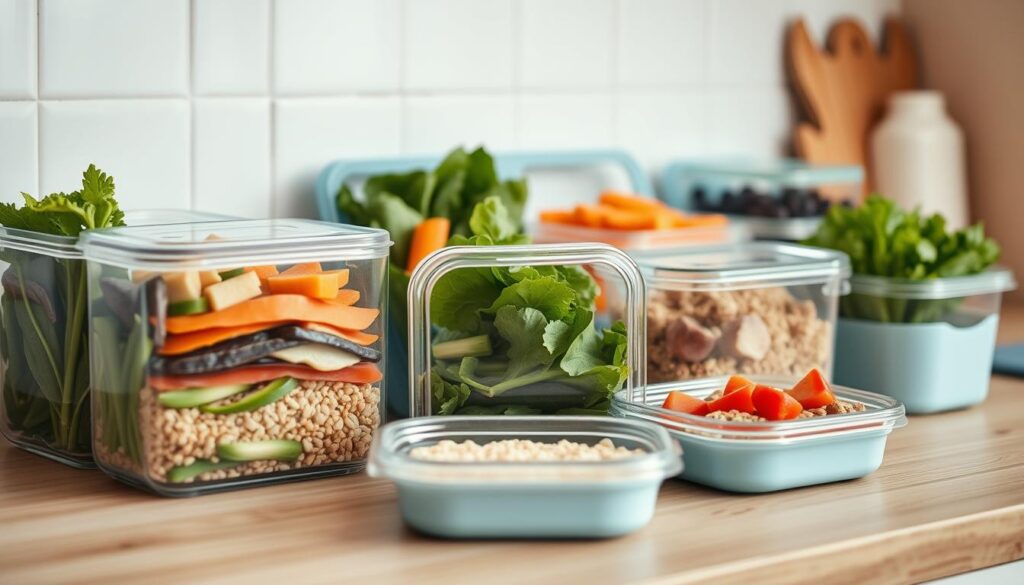
Popular Recipes and Ingredient Comparisons
I’ve tested dozens of combinations, from classic sausage-and-egg to plant-based marvels. Try these crowd-pleasers:
- Protein Powerhouse: Whole-grain English muffins with turkey bacon and sharp cheddar (23g protein)
- Vegetarian Delight: Spinach, feta, and roasted red pepper on sourdough (this veggie-packed recipe uses coconut oil spray)
- Lower-Carb Option: Cloud bread with ham and Swiss—perfect for keto followers
Adding raw veggies directly before freezing can lead to texture loss and sogginess. Always sauté or roast moisture-heavy ingredients before assembly.
Step-by-Step Preparation and Freezing Techniques
Sunday afternoons become magic hours with this routine:
- Cook proteins in bulk—scramble a dozen eggs or bake tofu slices
- Toast all bread bases to prevent sogginess
- Assemble with cheese in the middle (acts as moisture barrier)
- Wrap individually in parchment, then freeze in gallon bags
Pro tip: Label bags with dates and egg-free alternatives for easy identification.
Freezing breakfast sandwiches with cheese in the middle helps prevent soggy bread by creating a moisture barrier.
Comparing Nutritional Profiles Across Recipes
| Recipe | Calories | Protein (g) | Sodium (%DV) |
|---|---|---|---|
| Sausage & Cheddar | 420 | 19 | 38% |
| Veggie Feta | 290 | 14 | 22% |
Notice how cheese choices impact sodium levels? Swapping to low-fat mozzarella can save 15% of your daily value. As I tell my students: “Your freezer isn’t just storage—it’s your sous chef.”
Mastering your morning routine starts with smart fuel choices. By tracking calories and protein percentages, you turn rushed bites into intentional nourishment. Whether reheating a classic egg-and-cheese or crafting veggie-packed alternatives, every choice supports your goals.
These ready-to-heat options prove convenience and nutrition coexist. Busy parents using strategic meal prep systems save 12-15 minutes daily while maintaining balanced plates. Focus on what matters—like vitamin-rich spinach additions or sodium-conscious cheese swaps—without chasing perfection.
Your kitchen becomes a nutrition hub with simple tweaks. Try whole-grain bases for fiber, turkey bacon for lean protein, or plant-based cheeses for dietary needs. Each variation keeps the grab-and-go ease you crave.
Keep nutrition facts labels handy. Notice how 40% of preppers prioritize protein-rich mornings? Emulate their success by aligning choices with your energy demands. When smart planning meets real-life cooking, chaotic mornings transform into calm, nourishing starts.
Remember: Your best mornings begin with one informed bite. Now go conquer your day.
Savory Breakfast Pita Melts with Egg Whites & Sun-Dried Tomato
A protein-packed, vegetarian breakfast featuring fluffy egg whites, sun-dried tomatoes, and melted cheese inside a warm, toasted pita. Perfect for a quick and satisfying morning meal.
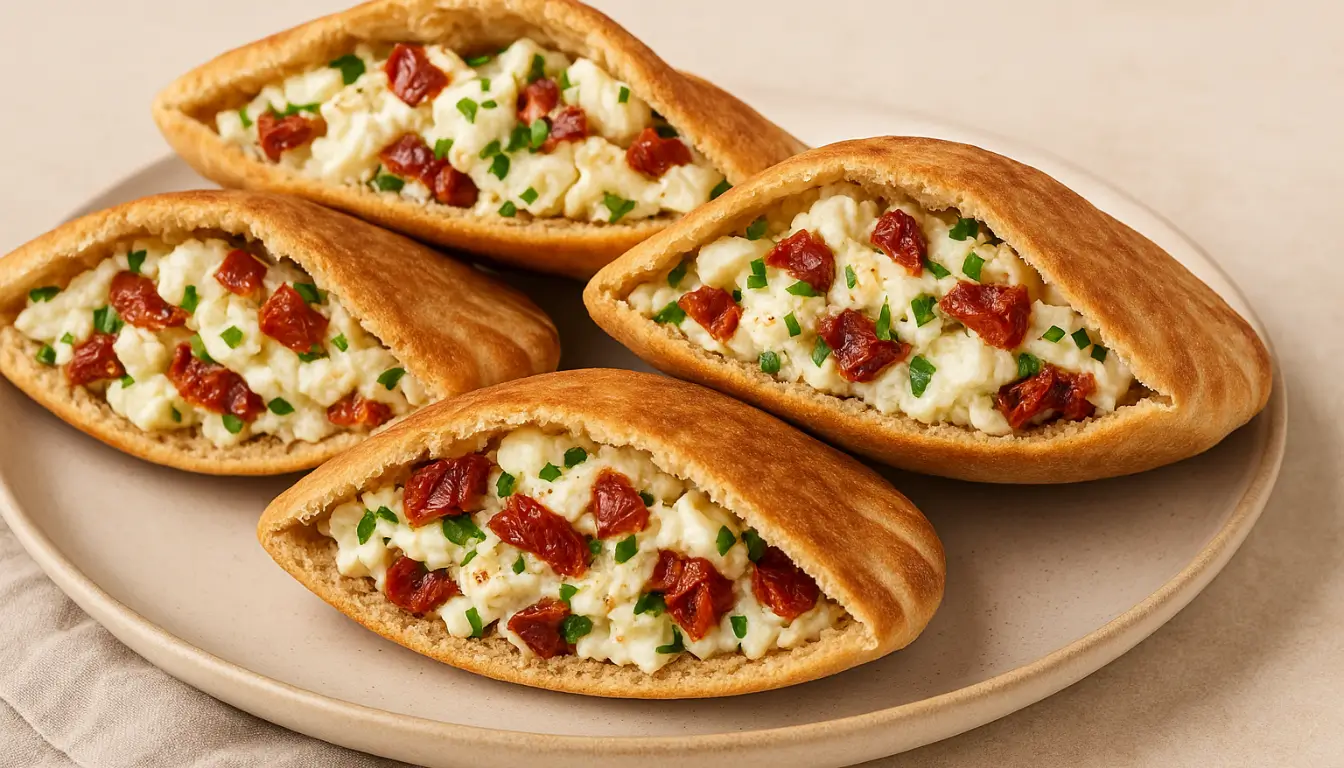
Nutrition Information
Equipment Needed
- Non-stick skillet
- Spatula
- Knife
- Cutting board
- Toaster or oven
Ingredients
-
4 large egg whites
-
2 whole wheat pita breads
-
1/4 cup sun-dried tomatoes, chopped
-
1/4 cup shredded mozzarella cheese
-
1 tablespoon olive oil
-
1/4 teaspoon salt
-
1/4 teaspoon black pepper
-
Fresh basil leaves for garnish (optional)
Instructions
Recipe Video
Savory Breakfast Pita Melts with Egg Whites & Sun-Dried Tomato
Learn how to make savory breakfast pita melts filled with fluffy egg whites, sun-dried tomatoes, and melted cheese. A quick and delicious vegetarian breakfast option.

